Training a dog to stay is an essential part of their obedience training. It can help keep them safe in potentially dangerous situations and prevent them from running off or getting into trouble.
3Teaching a dog to stay requires patience, consistency, and positive reinforcement. Training a dog to stay is one of the most important things you can do for your furry friend. It is essential to obedience training and helps keep your dog safe in various situations.
However, teaching a dog to stay can be challenging, especially if they are easily distracted. We bring you the ultimate guide on how to train a dog to stay. We have broken down the process into four easy steps you can follow, along with tips and tricks to make them more effective.
Here we will also discuss the importance of teaching your dog to stay, how to tell when they are ready to progress, common mistakes to avoid while training and what you should do if your dog fails to stay.
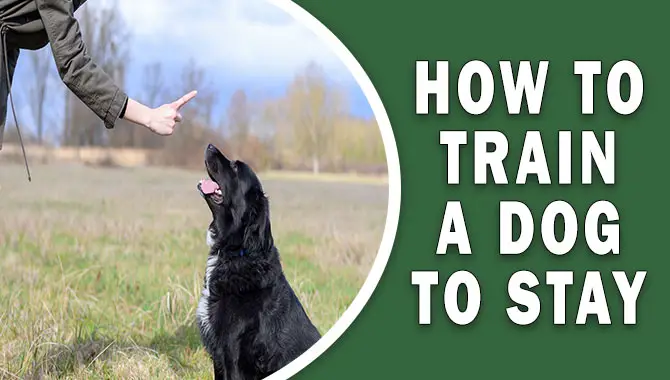
4 Easy Steps On How To Train A Dog To Stay
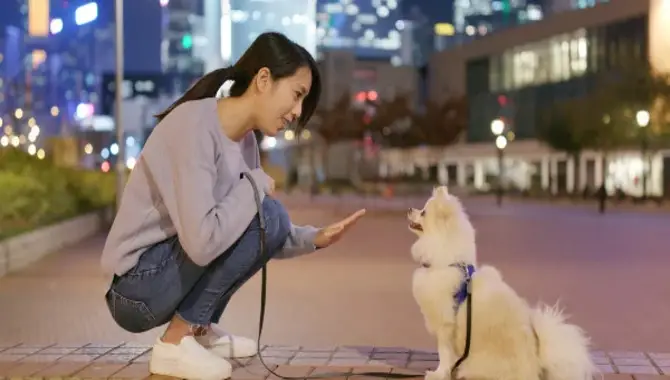
Training a dog to stay is an essential skill for any pet owner. It involves teaching your dog to remain in one place until given a release command. This can be particularly helpful when you need your dog to remain still, such as while greeting guests or crossing a busy street.
Training your dog to stay is an essential part of their obedience training. It can help keep them safe in potentially dangerous situations and prevent them from running off or causing harm to others. Here are 4 easy steps on how to train your dog to stay. With patience and consistency, you can train your dog to stay and improve their obedience skills, making them a happier and safer companion.
Step 1: Develop A Clear Stay Cue
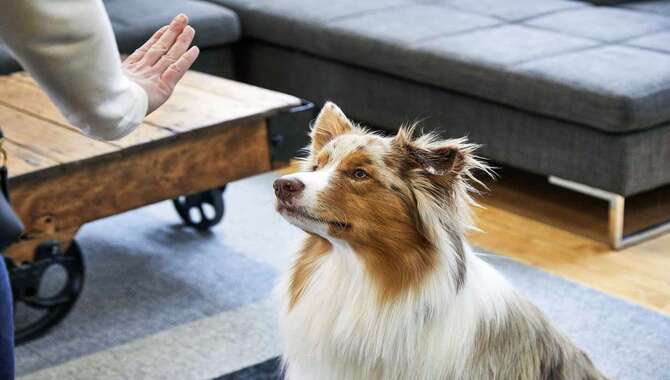
Training your pup how to train a dog to stay put in any situation is essential to obedience training. The first step is developing a clear stay cue by consistently using a simple verbal or hand signal every time you want your furry friend to stay.
It’s important to practice this technique in a quiet environment initially and reward your puppy with high-value treats for better performance. Gradually increase the duration of your dog’s stay position while practising in different environments and with varying distractions for longer periods. Consistency is key; ensure everyone uses the same cues during training sessions.
Step 2: Build The Duration Of The Stay
To build your dog’s ability to Stay on command, start by using a clear verbal cue or hand signal when teaching them to Stay in place. Begin with short periods and reward them with high-value treats for performing well.
As they progress, the length of time they Stay in place gradually increases. Consistency is key – always use the same cue or signal when giving the command. If they break position, calmly return them to their spot and start again for better performance.
Step 3: Increase The Distance
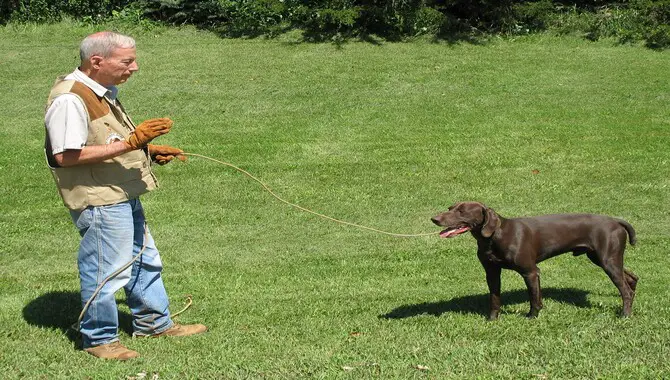
Increasing the physical distance between you and your furry friend is a crucial next step to teaching your dog to stay put in any situation or environment. Begin by taking a small step backwards and gradually increasing the space between you two.
Please Use verbal cues and hand signals while rewarding your pup for remaining put in their stay position for longer periods or when in high-distraction environments such as busy living rooms or outside near the front door on a leash. Remember to vary training sessions and utilize high-value treats to reinforce good behaviour and improve performance without causing separation anxiety.
Step 4: Gradually Add Distractions
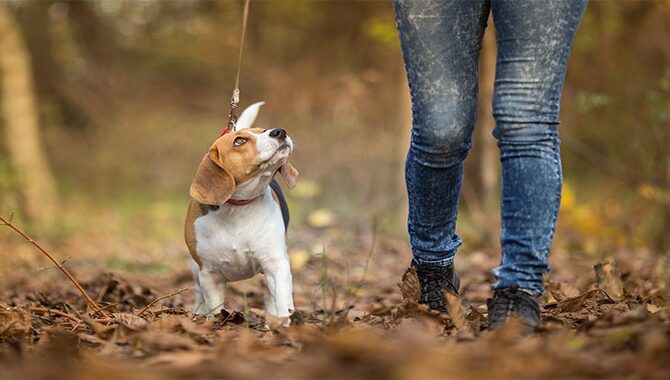
Teaching your pup how to stay is one of the most basic commands in dog training. When trying to figure out to train a dog to stay, it’s important to remember that adding distractions is an important part of the process.
Starting with simple steps such as sitting and staying for short periods and gradually increasing the length of time while using positive reinforcement like high-value treats will help your pup stay focused during long periods in various places. Incorporating real-life scenarios, such as mastering staying while at the front door or during separation anxiety moments, will help achieve better performance from your pup.
Understanding Obedience And Distraction
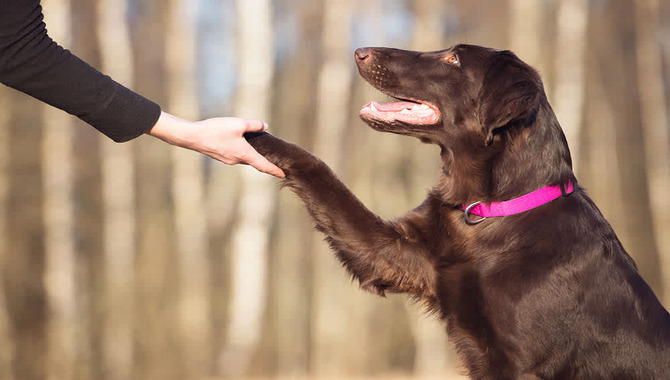
Establishing obedience and rewarding positive behaviour are essential to teaching your pup how to stay. Begin with simple steps like sitting and verbal praise before introducing the stay command. Use high-value treats from a treat pouch or clicker training during training sessions to reinforce good behaviour.
Gradually increase your dog’s stay position duration while incorporating release cues like “done” or a hand signal. Practice periods in various places with different distractions for better performance in real-life scenarios. Remember that consistency is an important part of dog training for peace of mind and safety.
Teaching Your Dog To Stay
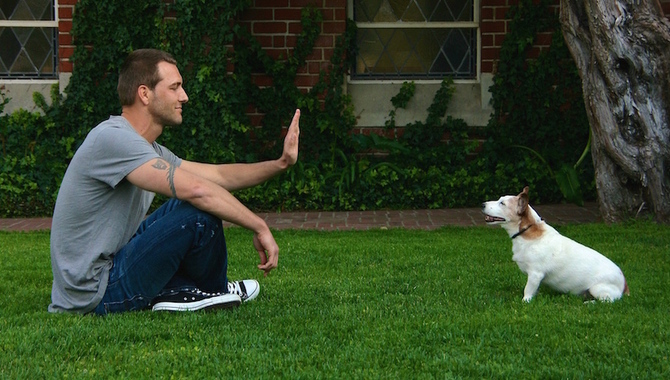
Teaching your pup to stay is an important part of dog training that provides peace of mind to dog owners by ensuring their dog stays safe in real-life scenarios. To begin with, ensure that your pup has learned basic obedience commands like sitting and coming on a verbal cue or a hand signal.
Use high-value treats from a treat pouch or verbal praise as positive reinforcement during training sessions. Gradually increase the duration of your dog staying in the stay position and incorporate release words like ‘done’ before rewarding them with a training treat.
Why Is Teaching Your Dog To Stay Important?
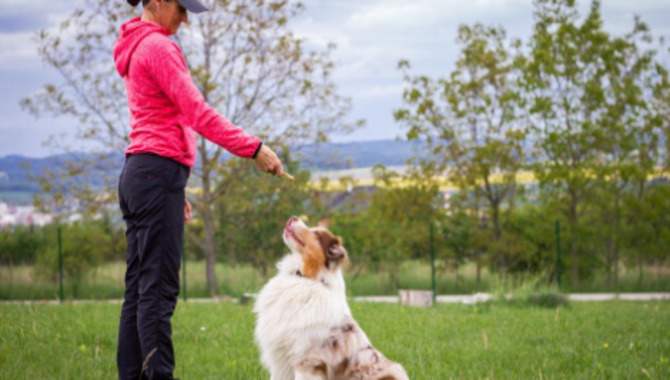
Teaching your dog to stay is an important skill that can help keep them safe in various situations. For example, if you are crossing a busy street or entering a crowded area, having your dog stay in place can prevent them from running off or getting into dangerous situations.
Additionally, teaching your dog to stay can help with behaviour management, giving them a clear understanding of what is expected of them in certain situations. Teaching your dog to stay is essential to their training and can help keep them safe and well-behaved. With patience and consistency, any dog can learn this important skill.
How To Tell When Your Dog Is Ready To Progress
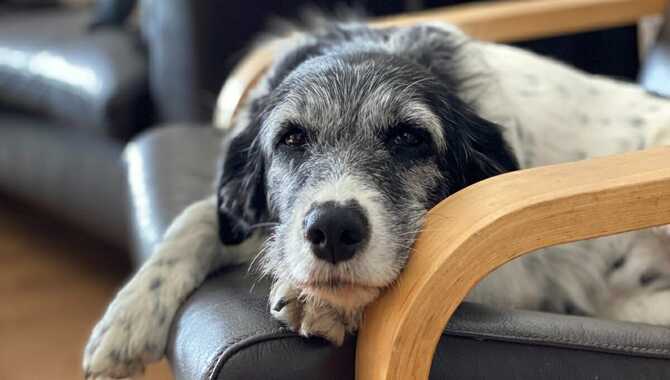
Observe their behaviour during training sessions to ensure that your furry friend is ready to progress in their training. Look for signs of obedience and consistency in following commands. Gradually increase the amount of time they stay sitting or down and incorporate distractions such as noise or separation anxiety into the mix. Use clicker training or a verbal cue to signal the release word when they have completed the desired duration of stay.
Common Mistakes To Avoid When Teaching Your Dog To Stay
Establishing a solid foundation of basic obedience training is crucial when teaching your furry friend how to stay. Avoid rushing through the process by gradually increasing the length of time in which they need to hold their stay position.
Use positive reinforcement techniques such as high-value treats and verbal cues for better performance. Additionally, consistency is key in reinforcing good behaviour. Address potential distractions during training sessions while rewarding your pup’s successes. By avoiding common mistakes in dog training, like impatience and punishment, you’re on track towards having a well-trained and safe pet.
What To Do When Your Dog Can’t Stay
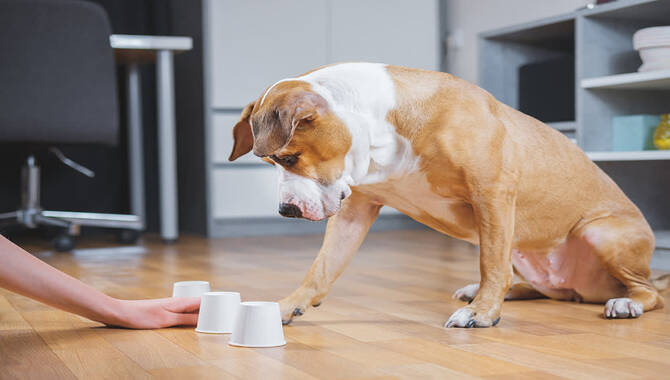
Teaching your dog how to stay is essential to obedience and distraction training. When your pup struggles with staying put, implementing positive reinforcement techniques like high-value treats or verbal praise encourages better performance.
It’s crucial to identify why your dog is struggling so that you can address the issue accordingly. Gradually increasing the duration of their stay while using release cues like “done” or a hand signal can help lengthen periods they can remain in a stay position, even during real-life scenarios. Seeking professional help is always an option if you encounter difficulties teaching this important command.
Conclusion
Training your dog to stay is an important command that can help keep them safe and well-behaved. It requires patience, consistency, and positive reinforcement to ensure your dog understands and obeys the command. Remember to start with short durations and gradually increase the time as your dog becomes more comfortable with staying in place.
A well-trained dog that can stay on command is not only easier to manage, but it’s also safer for them and those around them. Following the easy steps, you can train your furry friend to stay put no matter what distractions are present.
It’s important to remember that every dog is different, so progress may vary from one dog to another. If you encounter any issues during the training process, don’t hesitate to seek professional help. We hope now you understand how to train a dog to stay.
Frequently Asked Questions
What Should I Be Doing When Training A Dog To Stay?
When training a dog to stay, begin with basic commands and use positive reinforcement. Increase the duration and distance gradually. Practice in various locations and with distractions to help your dog learn the behaviour in different contexts.
What Are The Benefits Of Keeping A Dog At Home?
Having a dog at home can enhance our emotional and mental state by providing companionship. They also offer a sense of security and can encourage physical activity through playtime and walking. Children who grow up with dogs can also learn responsibility, empathy, and social skills.
How Can I Use Positive Reinforcement To Train My Dog To Stay?
Positive reinforcement is the key to training your dog to stay. Start with short periods and gradually increase duration, using consistent commands like “stay.” Use treats and praise to reinforce good behaviour and avoid punishment, which can cause confusion and anxiety.
Is It Possible To Teach An Older Dog New Tricks, Such As Staying?
Older dogs can still learn new tricks, including staying, with consistent and patient training using reward-based methods. While it may take longer than younger dogs, teaching an old dog new behavi ours with positive reinforcement is possible.
How Can I Effectively Communicate With My Dog During The Training Process?
Communicate with your dog effectively during training using positive reinforcement techniques like treats or praise. Consistency is crucial, using the same commands and tone of voice every time. Pay attention to your dog’s body language and cues, and be patient and persistent, as training takes time and effort.

Aquarium passion is all about connecting with the aquatic life and providing education to the public on the importance of these creatures. We showcase a wide variety of marine life through our exhibits as well as working with schools to provide unique learning opportunities for students of all ages.









